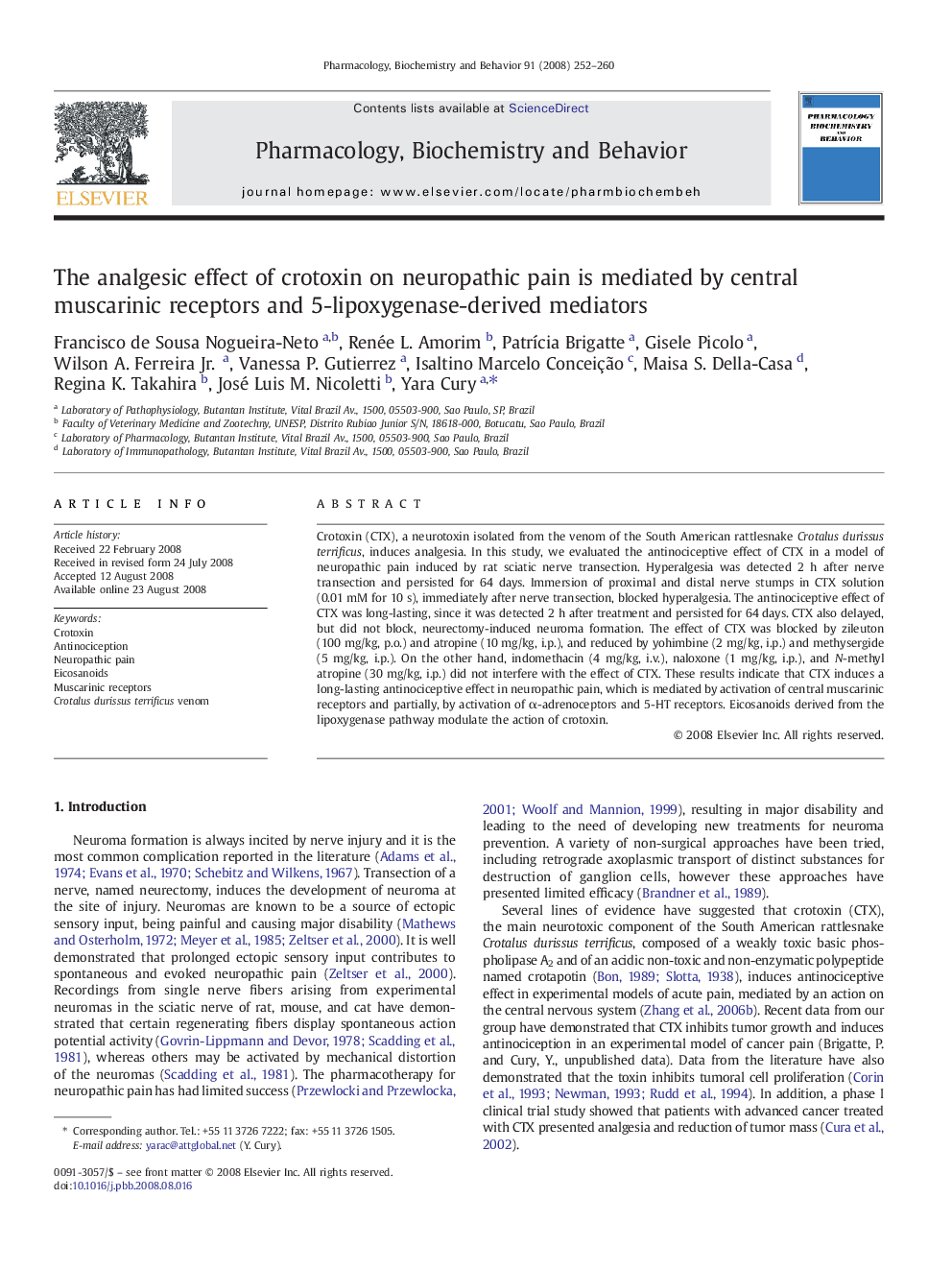| Article ID | Journal | Published Year | Pages | File Type |
|---|---|---|---|---|
| 2013272 | Pharmacology Biochemistry and Behavior | 2008 | 9 Pages |
Crotoxin (CTX), a neurotoxin isolated from the venom of the South American rattlesnake Crotalus durissus terrificus, induces analgesia. In this study, we evaluated the antinociceptive effect of CTX in a model of neuropathic pain induced by rat sciatic nerve transection. Hyperalgesia was detected 2 h after nerve transection and persisted for 64 days. Immersion of proximal and distal nerve stumps in CTX solution (0.01 mM for 10 s), immediately after nerve transection, blocked hyperalgesia. The antinociceptive effect of CTX was long-lasting, since it was detected 2 h after treatment and persisted for 64 days. CTX also delayed, but did not block, neurectomy-induced neuroma formation. The effect of CTX was blocked by zileuton (100 mg/kg, p.o.) and atropine (10 mg/kg, i.p.), and reduced by yohimbine (2 mg/kg, i.p.) and methysergide (5 mg/kg, i.p.). On the other hand, indomethacin (4 mg/kg, i.v.), naloxone (1 mg/kg, i.p.), and N-methyl atropine (30 mg/kg, i.p.) did not interfere with the effect of CTX. These results indicate that CTX induces a long-lasting antinociceptive effect in neuropathic pain, which is mediated by activation of central muscarinic receptors and partially, by activation of α-adrenoceptors and 5-HT receptors. Eicosanoids derived from the lipoxygenase pathway modulate the action of crotoxin.
